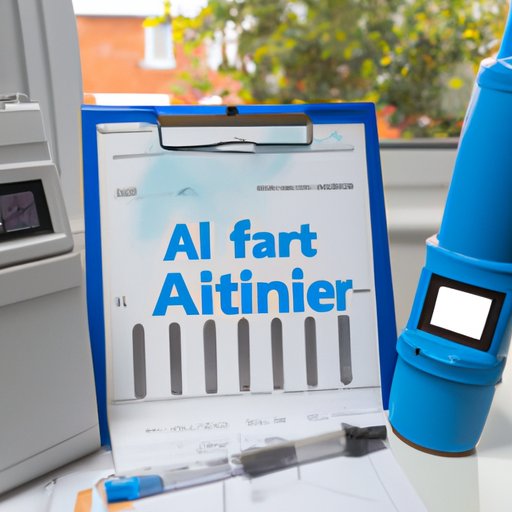Introduction
Indoor air quality is an important factor in maintaining a healthy home environment. Poor indoor air quality can lead to respiratory illnesses, headaches, fatigue, and other health issues. While there are many sources of pollutants, it is possible to reduce levels of contaminants and improve the air quality of your home. In this article, we will explore the steps you can take to test and improve your indoor air quality.
What is Indoor Air Quality and Why Is It Important?
Indoor air quality (IAQ) refers to the air quality inside buildings and homes. Poor IAQ can be caused by airborne pollutants such as dust, mold, pet dander, and chemicals. These contaminants can cause health issues such as allergies, asthma, and respiratory illnesses. It is important to test and monitor IAQ in order to identify and reduce sources of contaminants.

Overview of Sources of Contaminants
The most common sources of indoor air pollution are household products, building materials, combustion appliances, and outdoor air. Household products such as cleaning supplies, paints, and aerosols can contain volatile organic compounds (VOCs). Building materials such as insulation and carpets can release particles or VOCs. Combustion appliances such as furnaces and water heaters can emit carbon monoxide, nitrogen dioxide, and other pollutants. Outdoor air pollutants such as pollen, ozone, and smoke can infiltrate buildings through windows and doors.
Investigate the Sources of Contaminants in Your Home
The first step in improving your IAQ is to investigate potential sources of contaminants in your home. Look for signs of mold, pests, or water damage that could be causing indoor air pollution. Check your HVAC system and any gas-burning appliances to make sure they are working properly and not emitting dangerous gases. If you use chemical-based products, such as paint or cleaning supplies, make sure they are stored in well-ventilated areas. Regularly check and replace air filters in your HVAC system to ensure that they are clean and free of dust and debris.

Use Test Kits to Measure Indoor Air Quality
Test kits are available to measure levels of contaminants in your home’s air. These kits allow you to quickly and easily test the air quality in different rooms of your home. There are several types of test kits available, including those that measure levels of carbon monoxide, VOCs, formaldehyde, and particulate matter. Test kits usually come with instructions on how to use them, so make sure to read the instructions carefully before testing.
Monitor Humidity Levels
Humidity levels should also be monitored in order to maintain good IAQ. High humidity levels can promote the growth of mold and dust mites, which can worsen allergies and asthma symptoms. Ideal humidity levels should be between 30 and 50 percent. You can buy a hygrometer to measure humidity levels in your home. To adjust humidity levels, you can use a dehumidifier or an air conditioner.
Schedule Regular HVAC Maintenance
Regular HVAC maintenance is essential for keeping your air quality at its best. During maintenance, your technician will inspect and clean the air ducts, including the air filter. They will also check for leaks in the ductwork and any other issues that could be contributing to poor air quality. Scheduling regular maintenance can help reduce levels of contaminants and keep your HVAC system running smoothly.
Install an Air Purifier
Air purifiers are devices that remove contaminants from the air. There are several types of air purifiers available, including HEPA filters, ionizers, and ultraviolet light purifiers. Air purifiers can be used to reduce levels of allergens, VOCs, and other pollutants in your home. When choosing an air purifier, make sure to choose one that is designed to remove the specific contaminants you are trying to eliminate.
Consider Professional Testing Services
If you want to get a more detailed assessment of your home’s air quality, you may want to consider hiring a professional testing service. Professional testers can provide a comprehensive report on the levels of pollutants in your home, as well as advice on how to reduce them. To find a reputable service provider, ask for referrals from friends or search online for companies with good reviews.
Conclusion
Testing and improving your indoor air quality is an important part of maintaining a healthy home environment. Investigate potential sources of contaminants, use test kits to measure air quality, monitor humidity levels, schedule regular HVAC maintenance, install an air purifier, and consider professional testing services. Taking these steps can help reduce levels of pollutants and improve the air quality of your home.


